As the craze for visiting the seaside escalated Bognor Regis acquired a pier in its original form in 1865.
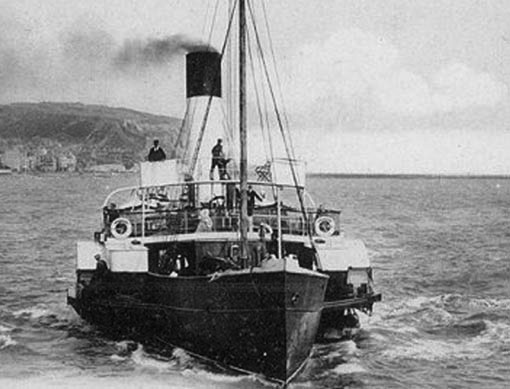
Up to the 1890s the paddle steamers sailing on the Sussex Coast from Brighton, Eastbourne, Hastings, Worthing and elsewhere were, like Cynthia, of relatively modest dimensions and were owned by a number of small locally based organisations and individuals. The arrival of the Plymouth Belle, a paddle steamer in an altogether grander class, in the area on charter to Collard in 1896 showed the way the world was moving, what the smaller tonnage was now up against and provided the catalyst for the building of the comparable Brighton Queen for the Brighton, Worthing and South Coast Steamboat Co Ltd which was delivered the following year.
Pier operators also wanted to take advantage of developments and in 1903 a new landing stage was added to the Pier at Bognor Regis capable of accommodating larger paddle steamers
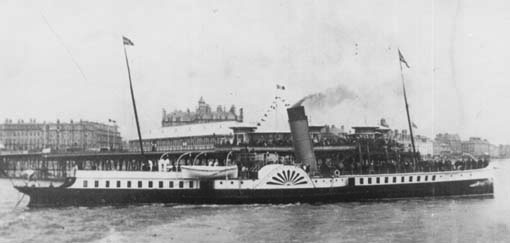
Plymouth Belle returned to the area again on charter to Collard for 1897. Given her size and speed it seems likely that she would have undertaken the same sort of trips which became staple fare in the ensuing years by her successors including long distance excursions eastwards to Folkestone, across the Channel to Boulogne and westwards to the Isle of Wight piers as well as sometimes on to Southampton.

For 1898 Collard did not renew the charter and instead Plymouth Belle was taken on by South Coast and Continental Steamers Ltd a Southampton based firm. They ran her again on the Sussex Coast but the Southampton association put the wind up what became Red Funnel which was by then already facing stiff competition at Southampton from P & A Campbell. From August 1897 they based their large Cambria at Southampton to compete with Red Funnel and Cosens for the longer excursions from Southampton and Bournemouth in and around the Solent, eastwards along the Sussex Coast and westwards to Weymouth.
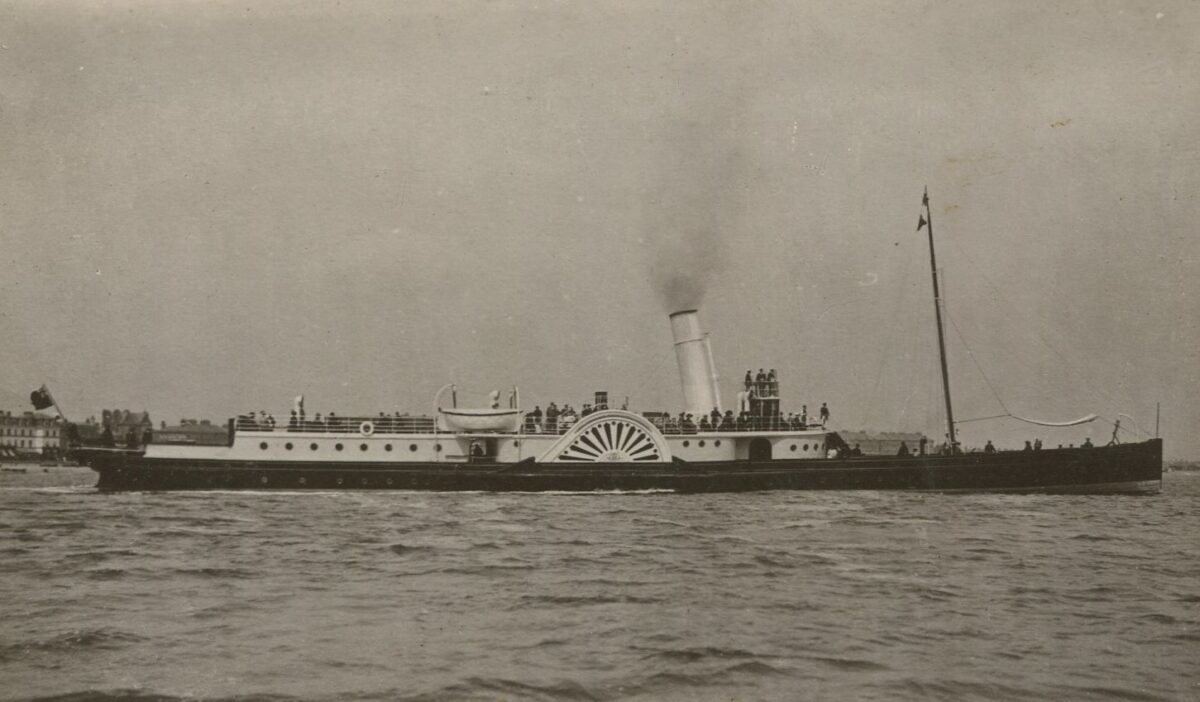
In 1898 Cambria was joined by their Glen Rosa at Southampton to strengthen their competition against Red Funnel.
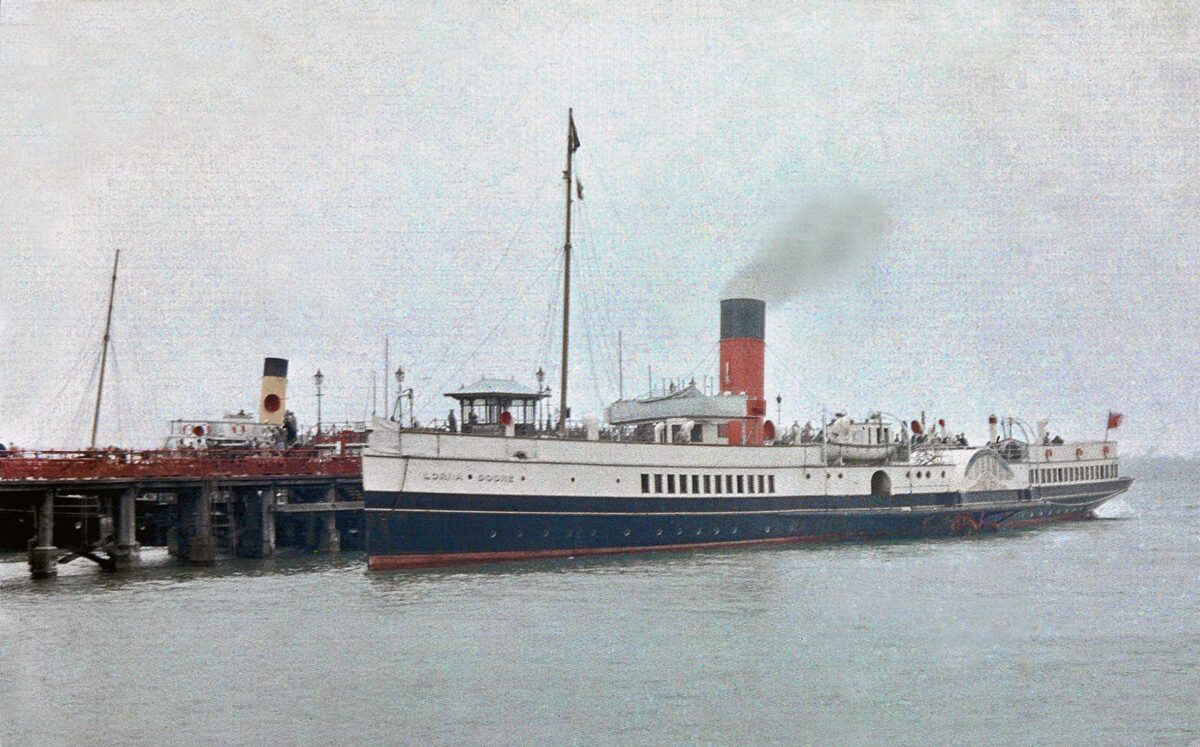
To match this unwelcome development with P & A Campbell, and possible further competition from South Coast and Continental Steamers’ Plymouth Belle in 1898, what became Red Funnel bought the second hand Lorna Doone so that they too would have a large and well appointed paddle steamer to somewhat balance the opposition.

As a further measure to safeguard their business interests Red Funnel ordered the cross Channel flyer Balmoral for 1900 and Cosens’ built their cross Channel Majestic in 1901. According to “The First Hundred Years”, a history of Red Funnel by G W O’Connor Cambria and Balmoral were pretty equally matched. They both took about four hours for the crossing between Bournemouth and Cherbourg. They could do it in three and three quarter hours in favourable conditions and tended to arrive back at Bournemouth in the evening in tandem with only a ship length or so between them. On the other hand Cosens’ Majestic was slower and G W O’Connor records took up to an hour longer for the trip.
Plymouth Belle did not return to the area after 1898 and was sold overseas for further work in Germany particularly to the Frisian Islands. P & A Campbell also pulled out of Southampton after the 1902 season and moved their South Coast base to the Sussex Coast where they drove out or bought up the competition in the ensuing years.
Red Funnel and Cosens were therefore left with two large paddle steamers built for competition with P & A Campbell which no longer existed and which, because of their size, proved ever hard to fill as the years rolled on except during the peak weeks of fine summer days.
The pier at Bognor was damaged by a storm in 1908. It was sold to new owners the following year and they invested heavily in facilities at the shoreward end including a theatre, arcade and roof top garden restaurant. The landing stage was not reopened in the aftermath of the First World War and it was not until 1936 that repairs were affected so that paddle steamers could once again make occasional calls there

P & A Campbells’ Brighton Belle was the first to call at the new landing stage on Thursday 11th June 1936.
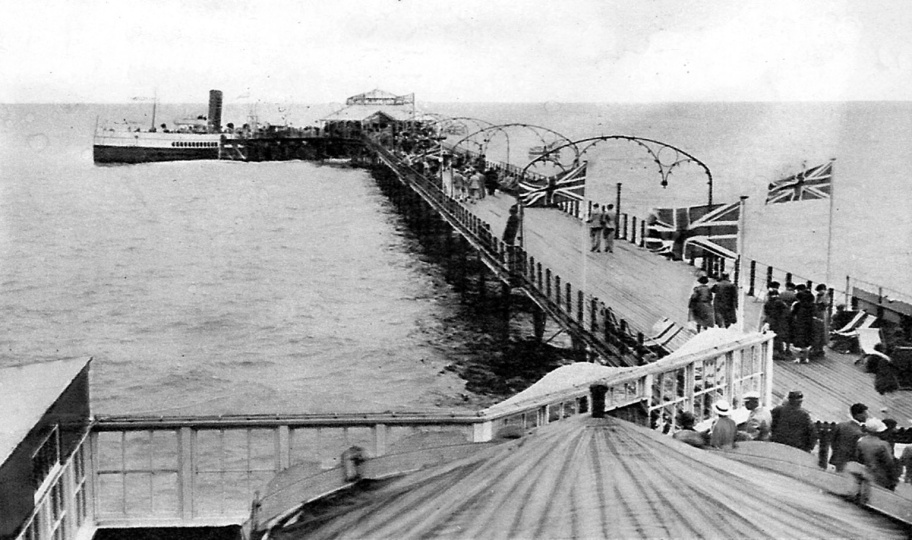
Red Funnel also made calls from 1936 onwards. With the mainstay of their excursions based on Southampton and Bournemouth encompassing the Solent and Isle of Wight piers as well as across to Cherbourg they did sail eastwards sometimes. Their route maps reveal that generally speaking their trips from Southampton and Southsea eastwards ran to their most distant Sussex Coast destination of Eastbourne directly from Southsea. Those to Brighton called at Southsea, Sandown and Shanklin on the way. And those to the closest, Bognor Regis, added a pick up from the Isle of Wight’s southern most pier at Ventnor.
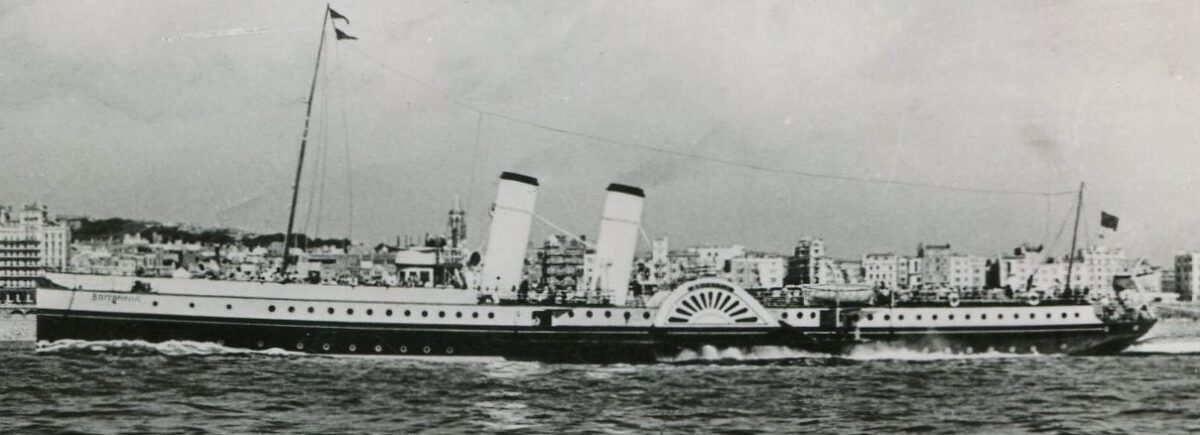
P & A Campbell continued to make some calls at Bognor after the war but not that many of them. Apart from commercial considerations Bognor Pier was not accessible at all states of the tide which complicated matters. The trips which were offered often fell into two distinct categories: A steamer brought passengers from Brighton and maybe Worthing and offered from Bognor an hour and a half cruise sometimes in the morning and sometimes in the afternoon “Towards the Owers Lightship”. Or occasionally the steamer from Eastbourne and Brighton would call to pick up passengers at Bognor on its way to one of the Isle of Wight piers although mostly trips from Brighton to the Ise of Wight were not scheduled to call at Bognor.
For example in the two week period from Monday 15th to Monday 29th August 1949 there were just two days in each week when Bognor received a service. On Mondays August 15th and 29th August there was an “Afternoon Cruise Towards the Owers Lightship” leaving at 3pm back 4.30pm with a single or combined rail return to Worthing at 4.40pm. On Wednesday August 24th this was offered as a morning cruise away from Bognor at 11.20am back 12.50pm with a single or rail return to Brighton at 1pm. And on Saturday August 20th the steamer from Brighton called at 10.30am on its way to Shanklin for 5 hours ashore due back at 7.20pm.
As another example: in July 1953 there were just two days of sailings scheduled from Bognor.

On Tuesday July 7th 1953 Cardiff Queen offered a day trip from Eastbourne and Brighton for time ashore at Shanklin or Ventnor, where the pier had reopened that summer, on which she picked up at Bognor at 10.30am back 6.40am.

Two weeks later at 11am on Thursday July 23rd she called again on her way to Shanklin and Ventnor. On the first date she also offered a circular evening trip out by steamer and back by train or bus to Worthing or a single only to Brighton at 6.40pm. And the same again on 23rd leaving at 7.25pm.

For 1954 P & A Campbell took the decision to send Glen Gower rather than Cardiff Queen to operate on the Sussex Coast. Talks had been going on with the Government about restarting cross Channel trips to France. Glen Gower had a Class II cross Channel Passenger Certificate. Cardiff Queen didn’t. So it was Glen Gower which set off from Cardiff on Wednesday June 2nd 1954 for Ilfracombe and Brighton.
Apart from local cruises in the first week or so Glen Gower was advertised to run the first trip from Eastbourne and Brighton to Sandown since 1939, with the reopening of the pier there, on Whit Monday June 7th but with no call at Bognor advertised. On Thursday 10th she was down to run from Eastbourne and Brighton to Shanklin again with no Bognor. But on Sunday 13th her schedule from Brighton and Worthing did include a call at Bognor on the way to Shanklin and Ventnor. However the steamer notice I have here has Bognor Regis crossed out in ink.
So far as I can see that is the last time that Bognor gets a mention in any P & A Campbell steamer notice. From this I think that we can conclude that an issue had developed with the pier which prevented steamer calls and that that issue remained unresolved.
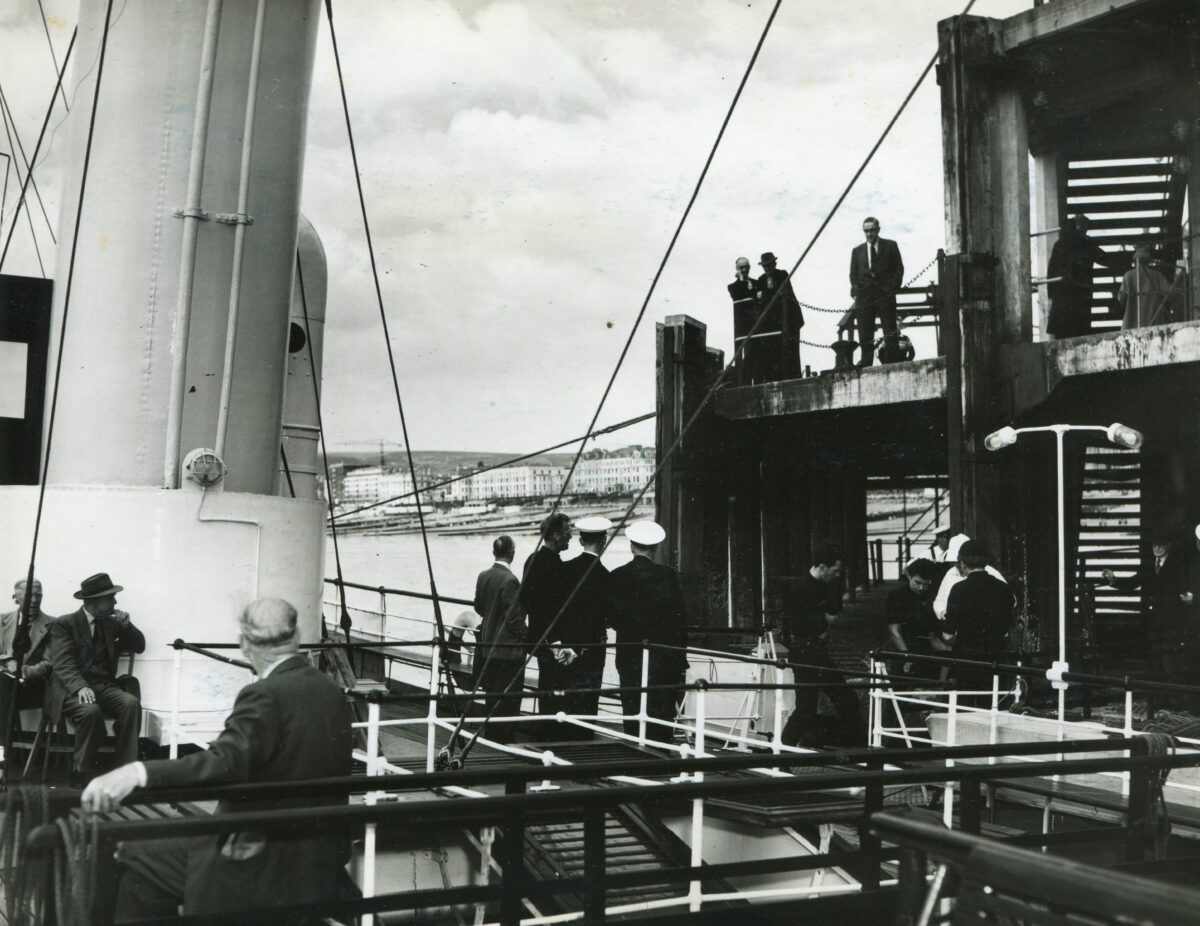
After P & A Campbell pulled out of running paddle steamers on the Sussex Coast there were two further attempts. Sussex Queen appeared in 1960 for a difficult summer running from Brighton, Eastbourne and Hastings. I don’t believe that she ever called Bognor Regis although of course she would have passed the pier in the distance on her way to the Sussex Coast and on her return to Topsham on the River Exe at the end of it.

Consul too was on the Sussex Coast, in her case in 1963, trying her best to operate a service with the odds stacked against her and nothing much going right where it could go wrong. Here she is casting off from Brighton. I don’t believe that she was ever scheduled to call at Bognor Regis either.
Tiny Point of Detail: In the footsteps of his Dad.

Capt H F Defrates’ dad was rather confusingly also called Capt H F Defrates. Yes I know that it doesn’t seem very likely but bizarrely it is absolutely true. Capt H F Defrates Senior had been mate on the paddle steamer Koh-i-Noor running on the Thames and became one of the masters of Plymouth Belle some time around when she was on charter on the Sussex Coast to: yes, well remembered: South Coast and Continental Steamers Ltd of Southampton.
Capt H F Defrates Junior was master of Consul when the picture two above was taken at Brighton in 1963, 65 years after Plymouth Belle, commanded by Capt H F Defrates Senior, had left the Sussex Coast. Capt Defrates Junior had resigned from Cosens to become master of the paddle steamer Princess Elizabeth running from Torquay in 1961. After a dispute with the Local Authority there plans were put in place, promoted by Capt H F Defrates Junior, for her to run from Brighton, Eastbourne and Hastings in 1962 doing what Consul, under the command of Capt H F Defrates Junior, ended up doing the following year. However this didn’t work out and Princess Elizabeth spent the summer of 1962 running from Bournemouth in competition with Embassy instead. At the end of the season the business had no money. Princess Elizabeth was laid up on a buoy in Poole Harbour. All the crew were paid off including Capt Defrates.
Shortly after that Tony McGinnity and his associates decided to buy Consul after her withdrawal by Cosens. He asked Capt Defrates to join him as her master. The company specially set up to do this was called South Coast and Continental Steamers Ltd. Ring any bells?
It is hard to believe that Capt Defrates, the son, didn’t know that Capt Defrates, his father, had been master of the Plymouth Belle on the Sussex Coast which at one stage had been chartered to an outfit called South Coast and Continental Steamers Ltd. Hence when Tony McGinnity was mulling over what to call his new company to buy Consul it is even harder to believe that the suggestion for a suitable name didn’t come from him.
And whatever commercial opportunities the Sussex Coast piers might have presented to Princess Elizabeth and Consul in 1962 and 1963, Capt H F Defrates Junior must surely have felt it somehow rather nice for him to be stepping into his father’s footsteps as a Sussex Coast paddle steamer captain working for a company of the same name as one which had chartered a paddle steamer of which his father had been a captain sixty years before.
Captain H F Defrates Senior was born in Mile End in September 1867. The latter part of his working life was spent with the Port of London Authority. He retired around 1932 and died in Croydon in March 1951 aged 83.
Capt H F Defrates Junior was born in Mile End in June 1894 and went to sea on ships trading from London to South America. He worked for the GSN in the 1930s. After service in the Royal Navy during the war, latterly in control of shipping on the Isle of Wight, he briefly set up in business with his wife as a ladies’ hairdresser in Seaview on the Isle of Wight under the name Maison Francis (Francis was his middle name) before joining Cosens of Weymouth as mate and relief master around 1948. He was made up to permanent paddle steamer master taking command of Victoria during the 1951 season a couple of months after the death of his father. He died in Putney in October 1984.
His son John Defrates became a diplomat and married the Indian film star Mohana Cabral. Mohana Cabral – Wikipedia
Tiny Point of Detail 2: I remember Capt H F Defrates Junior showing me the revolver he kept in his cabin on Princess Elizabeth in 1964 which he said was there for crowd control in the event of an emergency.
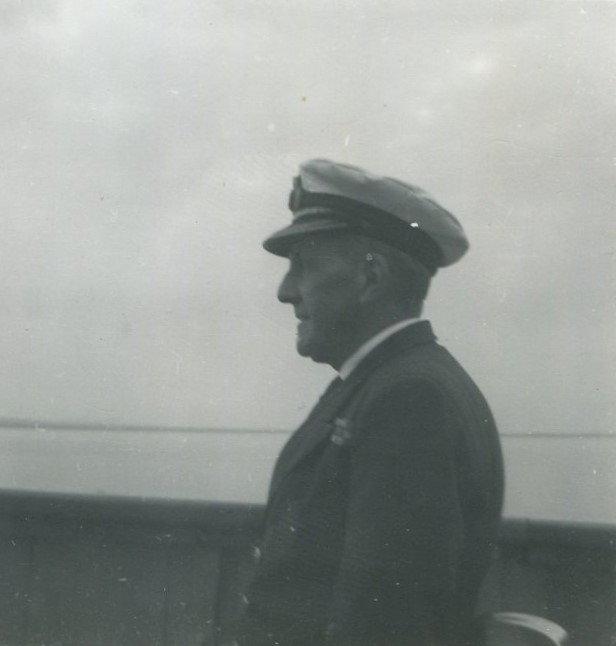
I think by then captains keeping guns for that use was on the way out. But he came from an older generation. He was 70 in 1964 which makes him just 18 when guns were used on the Titanic as part of normal practice to try to keep order when things started to go wrong. So it was part of his early training and life. He had also lived through the chaos, bombing and destruction of two world wars in which using guns to achieve a higher objective was normal. He was though a gently spoken, quiet and good humoured man. He had a kindly nature. He wasn’t someone I would have associated with violence at all. But he had a gun. How the world changes.
Kingswear Castle returned to service in 2023 after the first part of a major rebuild which is designed to set her up for the next 25 years running on the River Dart. The Paddle Steamer Kingswear Castle Trust is now fund raising for the second phase of the rebuild. You can read more about the rebuilds and how you can help if you can here.
John Megoran

